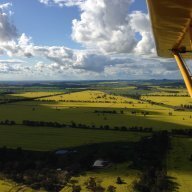The "plan" with the last L1 trial included a practical component, it was to take place once the level of legal / theory knowledge was established. The "trial" was intended to find out if any further theory training was needed, based on the pass rate there would not be any further theory needed. There were 2 practical streams proposed, one for a pilot already maintaining their aircraft, which involved fronting up to their next flight review with aircraft and maintenance records to a suitably qualified CFI/L2 for an assessment. If all was in order, L1 blessing given, if not then remedial training / fix aircraft, then blessing. The other stream was for new aircraft owners and involved a "workshop" run by persons capable and willing to deliver basic skills and assessment of competency. These could be held all around the country by non RAAus staff. But for some reason this path was not followed.
They way I see it, maintaining an aircraft is like flying one. The person doing the flying or fixing needs a range of skills to do the job safely and legally. RAAus could use online methods to train and assess the theory and legal stuff (like the various pilot exams it sets), but not the practical. There needs to be a network of maintenance training facilities (MTF) like FTFs. These could be attached to FTFs, if they have suitably qualified trainers and assessors, or perhaps you approach a local LAME and do some work experience with their shop and have a list of tasks signed off by them.



